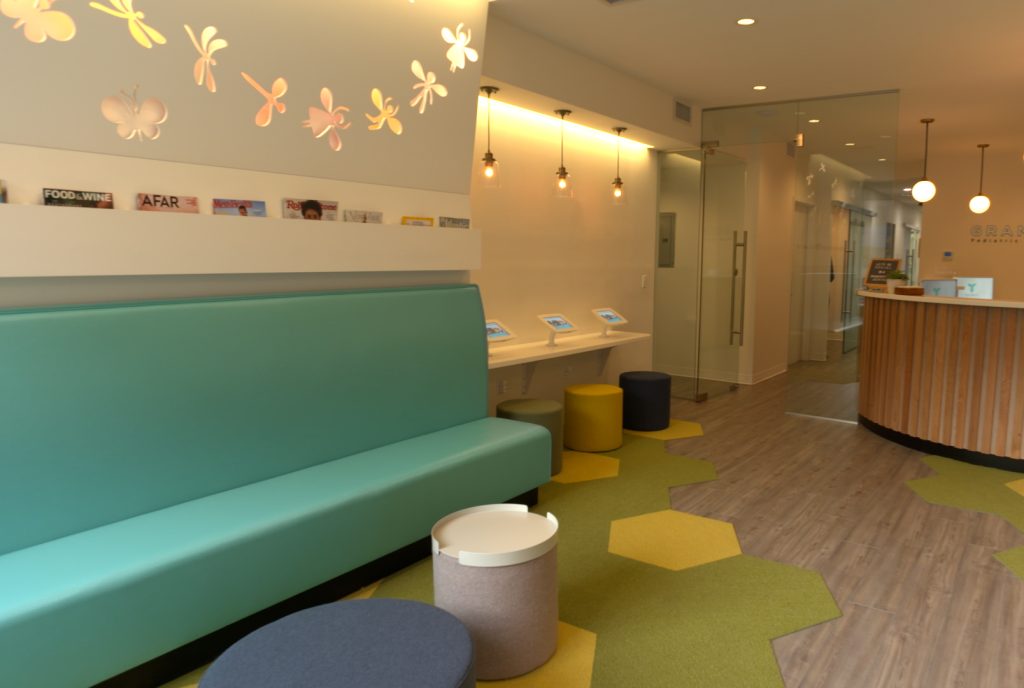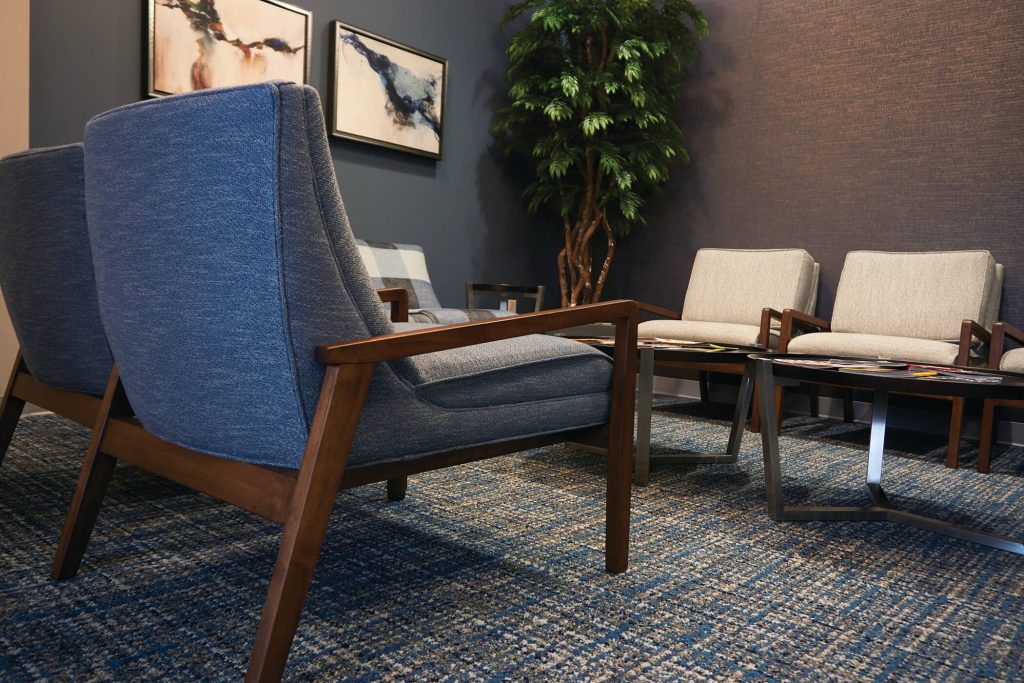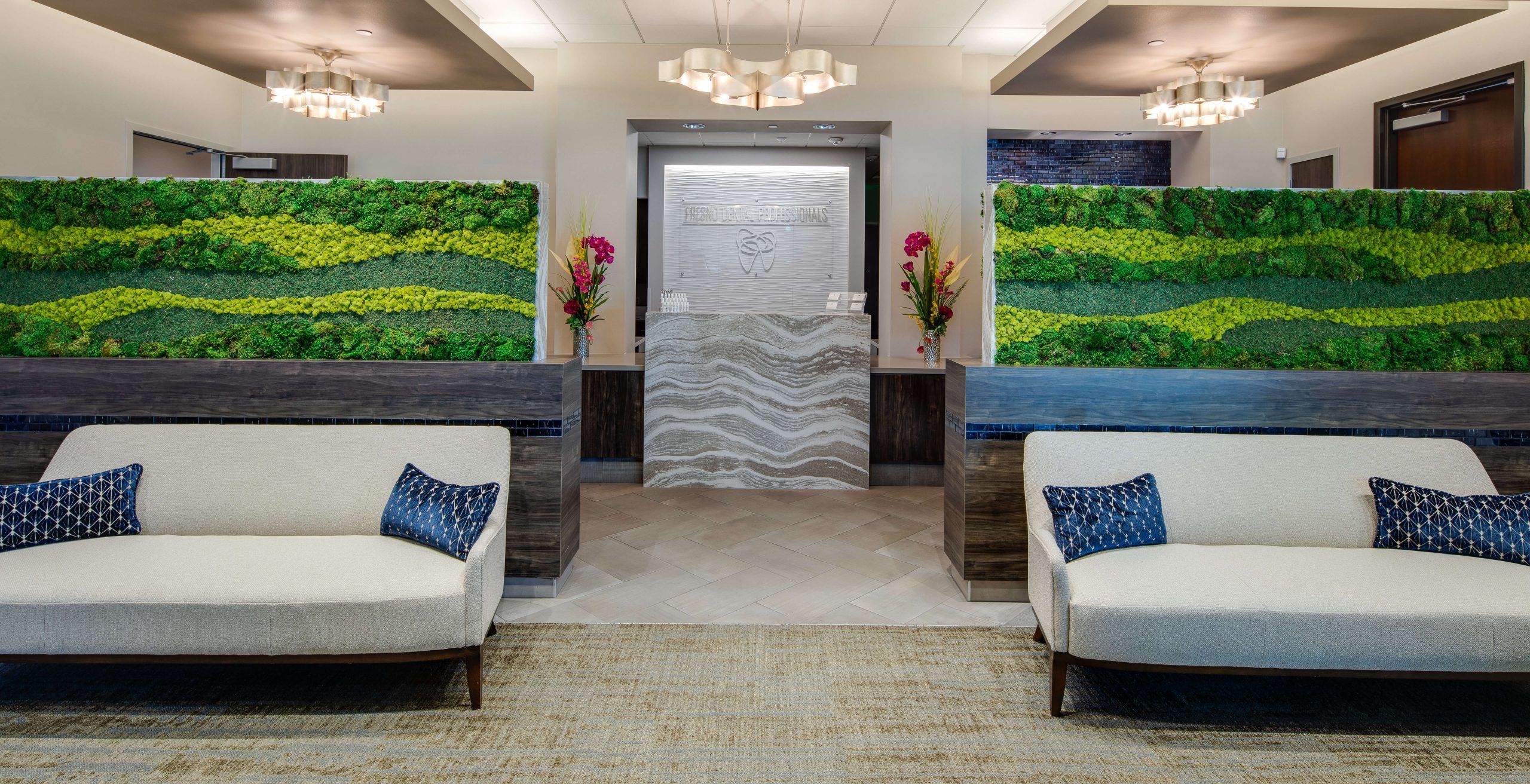
10 May Top 7 Solutions For Improving Acoustics in Your Dental Office
What’s worse: eerie quiet, or overwhelming noise? Because hearing is our primary sense for warning, loud or disruptive sounds, it is important to understand that sound impacts our physiological and emotional reactions to an environment and can leave a lasting impression. Now imagine yourself walking into a dental office—what do you hear?
In an untreated space, you may note conversations both in the waiting room or in treatment, music playing over a sound system, dental handpieces like drills or vacuums droning through the halls, keyboards clicking, or a phone ringing. Both the staff working in the office and patients visiting may find themselves distracted or even anxious by the level of noise. Luckily, there are many solutions that can help mitigate noise and create a calm, inviting space that people can enjoy.
Understanding Acoustics
To begin, it is important to understand what acoustics means. In simple terms, acoustics refers to the qualities of space that determine how sound is transmitted. For example, a sound studio needs perfect acoustics for recording the highest quality of sound. Acoustics is not necessarily about reducing sound, but more so about manipulating sound for the best experience. Virtually every material or element in a room affects the acoustics, so what should a dentist hone in on when looking to improve their office acoustics?
Products for Acoustic Troubleshooting
1. Acoustic Panels, Partitions, and Tiles

MDC Interior Solutions | Zintra Acoustic Solutions
Products such as Zintra from MDC come in a wide variety of colors, patterns, and applications. Not only do they greatly improve the acoustics of any space by absorbing sound, but they also become the focal point of the room. In regards to care, this product is extremely low maintenance; simply vacuum away dust or blot excessive moisture or spills. This product is bleach cleanable for disinfection as well!
2. Ceiling Elements like Decorative Soffits or Ceiling Clouds

Left: MDC Zintra | Baffles, Top Right: Grid soffting over a waiting room, Bottom Right: MDC Zintra | Shapes
Just like walls, Zintra offers products for ceilings, and the same great sound absorption and designs apply!
If you are considering acoustics before the build-out is complete, decorative soffits are a great design feature while also improving acoustics. While the soffit does not absorb the sound any more than a typical wall or drywall ceiling, it does scatter sound waves. We most commonly design soffits in waiting rooms (as shown), over the business office, or down a treatment corridor.
3. Acoustic-Savvy Vinyl Flooring
You’ve probably walked on acoustical vinyl flooring and never realized it. On the flip side, when you walk on non-acoustic flooring, you can’t help but note how loud your footsteps sound. These noise offenders include floorings like laminate and hardwood. While there are products to install in coordination with these products like sound-deadening underlayment, the product is not designed with the intent to be quiet. However, there are products like Milliken’s FlexForm Sound LVT that integrate an acoustical backing to the flooring plank itself, while also improving sound control and providing comfort underfoot.
4. Carpeting Insets
When working with clients, we often hear requests for no carpet. However, carpet can be a great addition to the office not only for the look, but for acoustics, comfort, and zoning as well. As pictured above, carpet insets can visually indicate a softer place for patients and guests to wait before treatment. In pediatrics or general offices that see a lot of children, noise is typically a concern. Carpet can work double-time to make this an enjoyable place for staff and guests to be.
Carpet insets down treatment halls will also reduce sound travel out of clinical, and provide a brief respite from hard flooring.
5. Soft Furnishings
Forgo hard plastic chairs for soft furnishings in open spaces like waiting rooms.
6. Sound Masking (Ambient Noise)
Although it may sound counter-intuitive, adding white noise to a space can aid in providing privacy. Used correctly, sound masking acts like a blanket over the soundscape, muffling sounds in the same sound register. This can be as simple as playing white noise through the office sound system or adding a water feature. Additionally, some offices have found that their new HEPA air purifiers provide a light hum, just the right touch of acoustical privacy in treatment.
7. Plants and Green Walls
Plants are not just for decoration! These natural additions are great tools for sound dampening, especially green walls as shown above. Green walls are very low maintenance; most only need a light misting when conditions are extremely dry.




